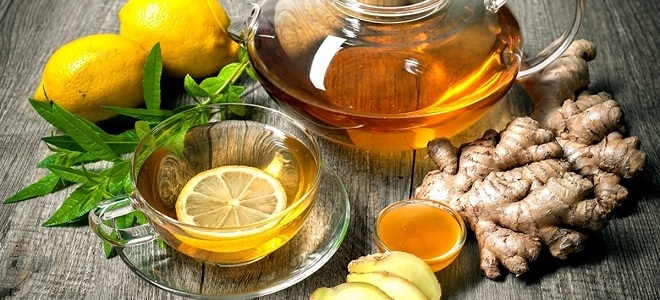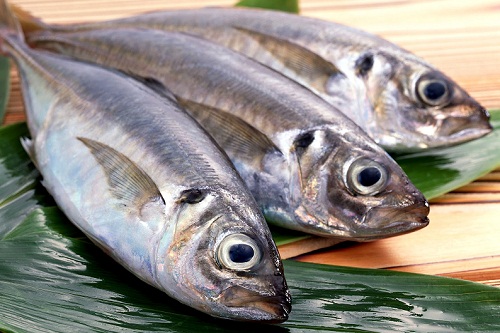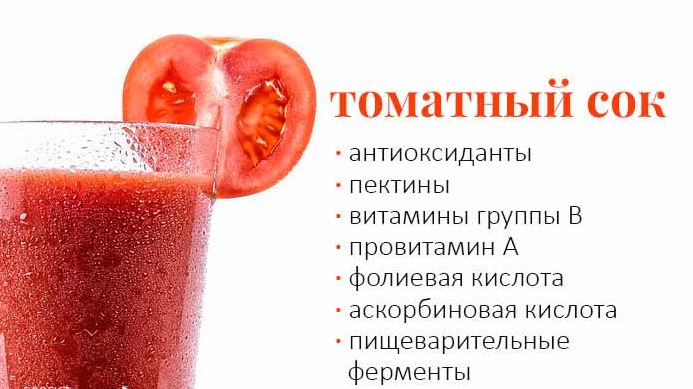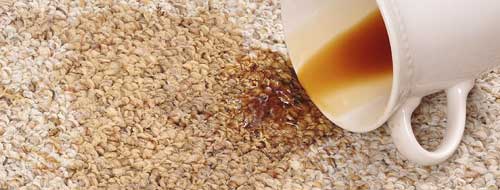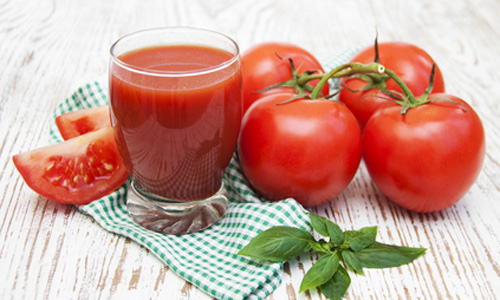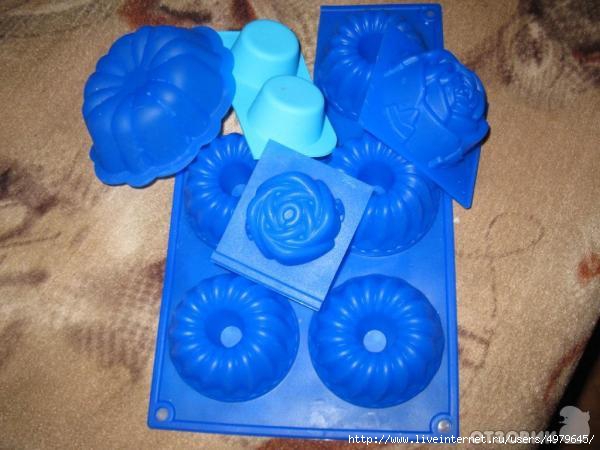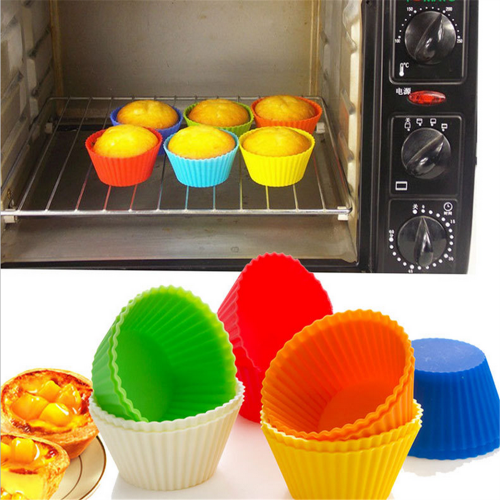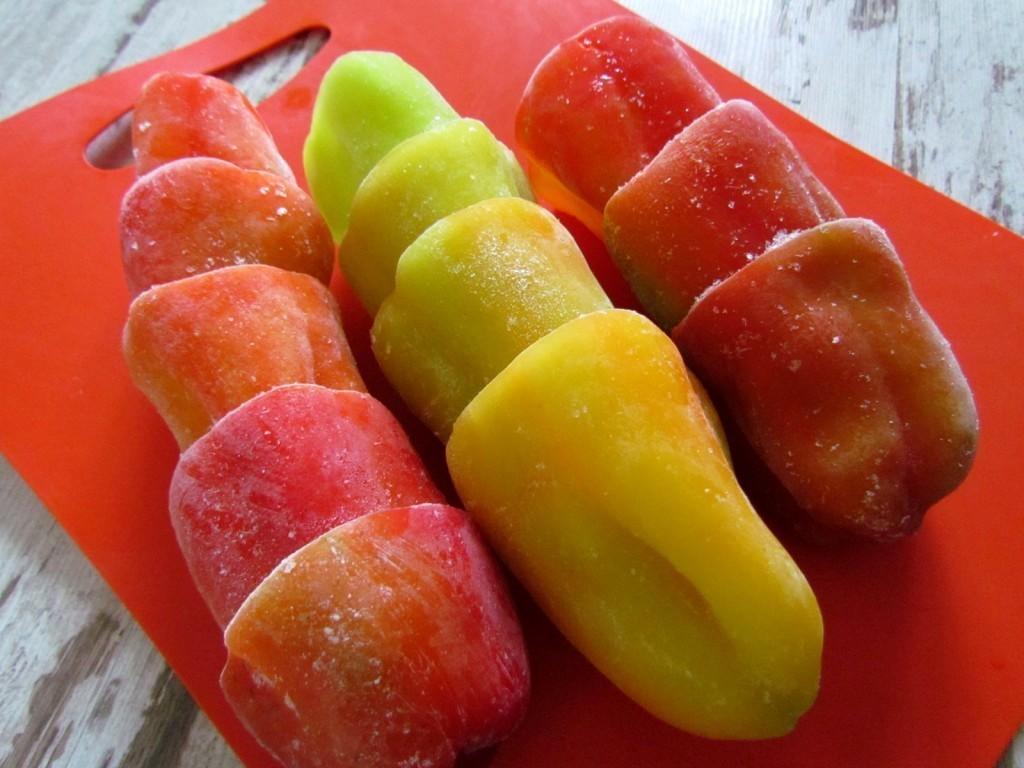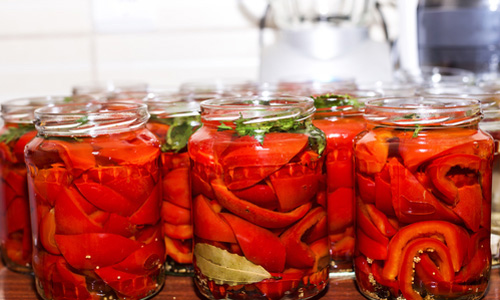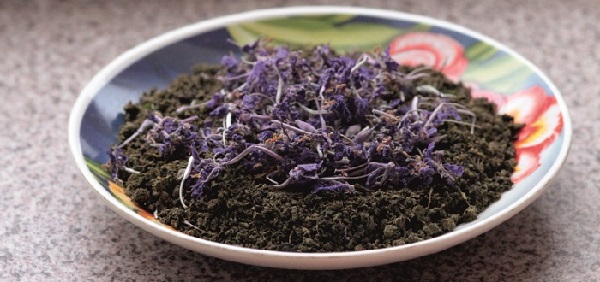What candied fruits are made of. The benefits and harms of candied fruit for the health of adults and children
Good day, dear readers. Let's talk about candied fruits today. Few people don't like this sweet treat. Now on the shelves you can choose candied fruits for every taste and wealth. But what are candied fruits made of that are sold in a store or in the market? I have long been interested in this question. And now I know for sure what these colorful pieces hide in me.
Honorable historians have argued for decades about the age of this treat. For example, our ancestors had their meals in the 14th century. In Russia they were called balabushki or dry jam. It is believed that these sweet sticks came to Europe in the form of a wedding gift to the Lithuanian prince Jagiello. They were brought by distinguished guests from Kiev.
Interesting! Semyon Balabukha - the first merchant to open a candied fruit production workshop in Russia. In his honor, they received the popular name "balabushki".
The Russian noble loved them so much that it was considered bad form if they were not served to guests at dinner parties or balls. And Catherine II ordered to deliver candied fruits to the imperial palace on a regular basis. In the post-revolutionary difficult time, the delicacy was a little forgotten, but nowadays it is difficult to imagine modern cooking without them.
Candied fruit making: shop and home
At the heart of both store and home-made candied fruits are fruit and berries slices boiled in syrup, which are subsequently dried. Often for these purposes, citrus peel is used. Most often, shop candied colored candies are pieces of apple, pineapple, melon and even ginger.
They can be made in two ways. Folding, and then candied fruits will be dull, because when dried on them there remains a film from the syrup in which they were cooked. Glazing when, for example, “lemons” will be with a shiny sweet crust. It is formed due to the fact that after the end of cooking they are again dipped in syrup and only then dried in the oven at a temperature of 450-500 degrees.
To begin with, the manufacture of candied fruit for sale should be carried out in accordance with GOST, which clearly states that they should be made only from natural products. Therefore, the store composition of candied fruits should not differ from home-made products: syrup and a list of products from which you can make this treat.

The sweetest pieces will be pineapple. Apple and melon also have a sweet taste, but unlike the previous fruit, are less sugary. That is why most people love them more. Candied citrus fruits have a slight acidity, which makes them incredibly tasty. But it’s quite difficult to boil blanks for such a delicacy, so they can hardly be found on sale.
Is everything so rosy as I describe? I would like to, but no. On the shelves you can find multi-colored goodies, for example, candied green or even bright red. And natural products do not have such bright and saturated colors. Why should manufacturers go to the trick and complicate the process of making candied fruit by adding dyes that give such a color juiciness to candied fruit?
The answer will surprise you! Our mental reactions are to blame for everything. It's no secret that large companies spend multi-billion dollar funds on all kinds of marketing research. And it has long been proven that the increase in purchasing power directly depends on the brightness of the packaging and the product itself. We subconsciously choose brighter products, considering them attractive and more edible.
Therefore, candied fruits are so bright, and even in bright packaging. It is not surprising that the manufacturer wants to get rich. It is good when he uses gentle natural dyes for this, but it also happens that they are made in pure chemistry. And she turns the treat into poison.

- It is not recommended to buy them by weight, even if they are cheaper. Most often, they stand in open boxes, which are not an obstacle to dust, debris or other unpleasant, and sometimes dangerous to health moments.
- Candied fruits in the package go through the whole process from manufacturing to sending them for sale in automatic mode, which means that it’s more difficult for microbes to get on them.
- On the package will be written not only the date of storage and manufacture, but also the conditions in which it should occur. Comparing everything is simple, but you will know for sure whether you can eat them or not.
- Their composition will be immediately registered, which every conscious producer must indicate.
- The products of bright colors are 100% painted products, but it is difficult to determine whether it is natural dye or not, so it is better to abandon them.
Candied fruit
The recipe for making candied fruit at home, although simple, but requires attention and time, which will take a lot. Usually at home they are prepared from products that are at hand. Most often these are apples, berries,.
Exotic lovers are busy with citrus, mango and similar products.
Let us give an example on apples, which should be fresh and juicy. And then we do this:
- Wash, peel and peel the apples. Cut into pieces.
- We prepare a pot of boiling water and one more, but with ice water, preferably with ice. Using a colander, dip the apple slices in boiling water for a couple of minutes and immediately dip in cold water.
- Throw them into a colander, and while excess liquid flows from them, boil the syrup. Place apples in a saucepan and pour hot syrup. Leave for at least 10 hours.
- Put the pan with apples and syrup on the fire and bring to a boil. Leave on for 6 hours. We repeat the procedure, but reduce the exposure time by an hour. Do this until the apple slices become transparent.
- Put them on a baking sheet and dry in an open oven at 150 degrees for a quarter of an hour. It may take a little more or less time, it all depends on your oven. The cooled treat can be eaten.

Candied fruits: benefit or harm?
Despite the fact that heat treatment reduces the usefulness of the feedstock, candied fruit is natural, which means a healthy product. Especially when they serve as a substitute for shop sweets that are made explicitly using some kind of chemistry. But do not forget that the calorie content of such fruits and berries is quite high. And if you abuse them, you can get:
- obesity;
- diabetes;
- an allergic reaction to the base product.
A lot of harm will bring a product containing unnatural dyes. Due to the fact that it is impossible to verify what kind of dye was used by an ordinary buyer, it is better to refuse to buy such candied fruits. To determine if there is a dye in a treat, it is not necessary to bring it to the laboratory, a glass of water is enough. If a piece of goodies, dipped in it, stains water, then you can rest assured that candied fruits are painted artificially. After all, products give their pigment back at the manufacturing stage.
They decided to go with the family, but to deprive children of treats is cruel. But if you replace the store sweets with balabushki, this is a completely different matter. After all, it is both tasty and healthy. But it’s better to do them yourself, so you will know exactly what their composition is and that they will not bring harm.
To the question of what are candied fruits made of? set by the author Eurovision the best answer is from peels of an orange, etc.
Answer from Device[guru]
CANDIED FRUIT. Dense, candied fruits, vegetables, or peels of watermelons and melons.
Cooking
An indispensable condition for the preparation of candied fruits is the aging of prepared plant materials (for example, peel of cucumbers, watermelons, melons, from which the upper dense skin and the inner edible layer are removed) in lime water or lime milk (see) for a day or two.
The next operation is washing the workpieces, cooking, drying and, finally, chipping to obtain candied fruits. Candied processing is also received by all green, unripe vegetables and fruits (for example, plums with undeveloped seeds, green nuts, etc.) when they want to cook jam from them.
Candied fruits retain their characteristic color: green for watermelons, yellow for melons, white-matte for cucumbers, which contributes to their decorative use in confectionery. In some products (especially in English muffins, Danish muffins, Easter cakes) candied fruits give the product a characteristic taste accent, without which such a product is not perceived as genuine.
Candied fruits in products (including Easter) are chopped quite finely and crumbled in flour before being introduced into the corresponding dough, which prevents the concentration of candied crumbs in any one place of the cake or Easter cake and guarantees their uniform distribution throughout the whole product.
Answer from Nina ...[guru]
Candied fruits are usually made from unripe melons, which have a large layer of tasteless hard flesh at the crusts.
Candied fruits can be made at home. A very simple recipe. It is necessary to soak the peels of orange or mandarin in cold water (so that bitterness goes away) for a day and change the water several times. Then cut the crusts into thin strips and cook saturated sugar syrup (it all depends on the number of crusts so that they are completely covered with syrup). Dip the crusts in syrup and cook for 45 minutes over medium heat. Then gently get candied fruit and distribute it separately from each other on food foil. When they have cooled, sprinkle them with small sugar, and they will not stick together. Store in a closed container.
Answer from Alexandra Izmailova[guru]
I make candied fruits from thick watermelon peels, but in general they can be prepared from any fruit of dense consistency, from takva, melon, etc.
Answer from Get dark[guru]
Candied orange peel
Ha 1 kg. orange peels: 1200 g of sugar, 3 cups of water.
Thin-skinned oranges are cut into 4 parts, peeled and cut into slices or cubes.
Crusts are poured with cold water and soaked for several days, changing the water 3-4 times a day. Then the crusts are boiled without sugar, draining water several times until bitterness disappears.
Syrup is made from sugar and water and the prepared crusts are lowered there. As soon as the syrup boils, it is removed from the stove and incubated for 8-10 hours in a cold place. The next day, cooking continues, boil the crusts for 5 minutes. and again incubated for a day and so on until candied fruits are ready. At the end of cooking, add the zest and lemon juice.
The readiness of candied fruit is determined as follows: a slice of candied fruit is pounded on a fork, the syrup slowly drains, and the crust is covered with a brilliant coating.
Candied Pears
For 1 kg of pears: 1100 g of sugar, 3 cups of water.
Hard, not overripe pears are cut, dipped in salted water and boiled for 5-10 minutes. Tilt in a colander and washed with cold water. Sugar syrup is boiled, dipped in boiling pear syrup and left for 5-6 hours in a cool place. Then boil another 5-6 minutes. and again stand for 8-10 hours. At the end of cooking, citric acid and vanillin are added to taste. The candied fruit is kept in syrup for 10-15 hours, and then dried like apples, sprinkled with sugar and stored in jars or boxes.
Candied Apples
For 1 kg of apples: 1100 g of sugar, 3 cups of water.
Apples are washed, peeled, cored with seeds, and sliced \u200b\u200binto halves. Small apples are taken whole, previously pricked with a fork. Chopped apples are covered with a cloth soaked in cold water, or immersed in a weak solution of citric acid so that they do not darken.
Prepared apples are poured with boiling water (3 cups) for 5 minutes. , then the water is drained and sugar syrup is prepared on it. Dip apples in boiling syrup, bring to a boil and put in a cool place for 8-10 hours. Then boil on low heat for 5 minutes and again stand for 5-6 hours. Candied fruits are ready when the slices become transparent.
Candied fruits are left in syrup for a day, after which they are discarded in a colander and laid out on a dish or parchment for drying for 1-2 days. The candied fruit is sprinkled with sugar and placed in boxes. For long-term storage, candied fruits are left in jars with syrup, like jam, and if necessary, the syrup is drained and dried.
Candied fruit from a mountain ash
Ha 1 kg of mountain ash: 1400 g of sugar, 3.5 cups of water.
Use any variety of mountain ash after the first frost. Sorb the mountain ash and pour boiling water for 5-10 minutes. The water is drained, and the mountain ash is soaked in cold water for 2-3 days, changing the water daily 3-4 times.
Sugar syrup is boiled, dipped in boiling mountain ash syrup and insisted for 8 hours. Then boil for 5 minutes. and incubated for 1 day. At the end of cooking, citric acid and vanillin are added. Rowan is dried in the same way as apples.
link
at this address another 25 different recipes for making candied fruits ...
Candied fruit - pieces of fruit, cooked in sugar syrup. They are a traditional oriental sweet. The history of the delicacy is connected with the hot climate of the countries, in which conditions the candying made it possible to “conserve” fruits and preserve the harvest. It is interesting that in Russia the product is called "dry jam".
Fruits soaked in sugar syrup are used as decoration for decorating rolls, puffs, cookies, cakes, and pastries. In addition, they are placed in the form of fillings in shortbread, yeast, biscuit, muffin and pastry.
The treat serves as a natural substitute for sweets, contains fiber and organic acids, which contribute to the removal of toxins and toxic substances from the body, instantly replenish energy costs (due to the breakdown of fast carbohydrates), increase blood glucose.
Production technology
Candied fruit is currently not a scarce product. They can be purchased at any supermarket, pastry shop or bazaar, both in packaged form and by weight. However, today's candied fruits are bright “cubes and sticks”, as a rule, dry and coarse-fibered, have a sugary-sweet taste. The question arises: what are they made of? Often, manufacturers are limited to the inscription "tropical sweets", which does not say anything specific. One can only guess what is hidden under this epithet ...
Nutritionists do not recommend purchasing candied fruits of a bright color with a pronounced fruity smell, since this indicates the introduction of a large number of dyes, flavors and preservatives into the product that will not make the person healthier. To protect yourself and your loved ones, oriental sweets are recommended to be prepared independently. This is the only way to be sure of the quality and naturalness of the raw materials, and the authenticity of the finished dessert.
Most often, candied fruits are made from apricots, plums, cherries, apples, pears, pineapples, carrots, pumpkins, lemon, watermelon and melon peels. However, zucchini, beets, cherry plum, grapes, peaches, and quince can also be used as feedstock. A treat is prepared from fresh or frozen fruits, berries and even jam.
The technology for the production of oriental sweets can be divided into 4 stages: preparation of raw materials, blanching and aging in sugar syrup, drying, glazing or sprinkling.
Let's consider in detail how to cook candied fruits:
- In the first stage, the fruits or peels are washed, cleaned of pulp, seeds, cut into cubes or strips, 10 mm x 10 mm or 10 mm x 25 mm in size. Watermelon and melon skins are additionally kept in cold water for 2 days until the salty taste is completely eliminated.
- At the second stage, the fruits and peels are placed in boiling water for 10 minutes (blanching process), then they are removed from the liquid and poured with hot sugar syrup, brought to 90 degrees, with a concentration of 60% and left for 8 hours. This time is enough for the fruit to soak, “conserve” and become sweet in taste.
- Fruits are unloaded on a lattice baking sheet with a cell diameter of up to 7 mm. It is necessary to wait for the syrup to drain completely. To speed up the drying of candied fruits, they are blown with cold or warm air, placed in dryers. At the same time, the solids content in the finished product should be at least 80%.
The syrup, in which the fruits were aged, is used to create jam, jam.
- The final stage in the production of candied fruits is their sprinkling with sugar or glazing. In the first case, the fruits are rolled in sweet powder. The amount of granulated sugar should not exceed 15% by weight of the fruit. The fruit processing process is as follows: dried cubes or sticks of berries are served on a perforated metal drum with a hole diameter of up to 7 mm, which rotates continuously. In it, sugar is evenly distributed on the surface of candied fruits. At the same time, sprinkling should be done manually.
In the second case, glazing is performed in sugar syrup, the concentration of which depends on the type of fruit. So, for melon and watermelon peels, it does not exceed 80%, apricots, peaches and plums - 82%, pome seeds, citrus fruits, figs - 83%.
Prepared syrup is poured into enrobing double-boiler systems based on the calculation of 15 kg of dried fruit per 30 dm3 of sweet liquid. Candied fruit is mixed with a slotted spoon, boiled with a light boil, replicated, as a result of which sugar crystallizes on the surface of the fruit, a transparent film forms - glaze. Then the fruit is carefully removed, re-dried.
Properly prepared candied fruits are covered with a shiny, glassy, \u200b\u200blight and transparent film of glaze through which the natural color of the fruit is visible. They do not contain influx of sugar and signs of spoilage (mold, fermentation), due to the vital activity of organisms.
The shelf life of the candied fruit is 6-12 months in a dry room at an ambient temperature of 5-20 degrees, relative humidity of 75%. Candied fruits are stored in a glass bowl.
Chemical composition
Fruits, vegetables, berries and their peels cooked in concentrated sugar syrup are one of the most discussed products of the XX-XXI centuries. Some argue that this is a useful alternative to “chemical” sweets, while others blame the product for excessive glucose. Nutritionists insist that natural candied fruits, unlike their tinted counterparts, contain useful fiber, which is necessary for normal digestion, and also serve as a supplier of carbohydrates, sugars, which are responsible for vitality, strength, energy and vitality of the body. Such a product has a natural color, nondescript without a pronounced smell.
The chemical composition of candied fruit depends on the type of feedstock from which they were prepared. Apple, pear sweets contain a lot of iron, citrus fruits - ascorbic acid, pumpkin, carrot - carotene.
Interestingly, candied fruits consist of 70% carbohydrates, 2-5% of proteins, 1-2% of fats. In 100 grams of the product, 250-350 kcal is concentrated.
By the appearance of their surface, the following types of candied fruits are distinguished: glazed, candied and folding; by configuration - with leaves, segments, cubes, tablets, rings, sticks; by color - red, green, yellow, orange, violet. Interestingly, the color of candied fruit is not always dependent on the raw materials used. Unscrupulous manufacturers often make fruits from a stiff, low-value pineapple core that are tinted with aggressive dyes in the desired color and sold in the form of kiwi, mango.
How to distinguish natural goods from fakes
To do this, place a piece of candied fruit in boiling water. If the water becomes colored, this is a poor-quality product, in the production process of which chemicals were used. As a rule, such fruits are made from gelatin, dye, essence, citric acid. Often their composition does not include fruits and berries, they do not provide value to the human body, rather the opposite.
When dried, the fake has a saturated color, very bright, attractive to the buyer. In no case should you buy such candied fruits and give them to children. Do not put your baby in danger! Cook them yourself with fresh fruit. In this case, an oriental delicacy will be absolutely safe to eat, without harmful food additives.
Candied fruits can be used as a substitute for confectionery or as a decoration for decorating desserts.
Benefit and harm
The abundance of sugar and heat treatment reduce the benefits of fruits and vegetables from which candied fruits are made, but do not completely deprive them. The pulp of candied fruits contains fiber, vitamins A, B, C, iron, potassium, magnesium, calcium, phosphorus, sodium, which cleanse the body of toxins, normalize metabolic processes, give strength, energy. The benefits of candied fruit made from watermelon and citrus peels boil down to the fact that they supply pectins to the body that regulate blood glucose and intestinal function, and reduce the risk of developing malignant neoplasms.
The product contains a lot of sugar, so the delicacy should be excluded from the diet of diabetics, hypertensives, people suffering from obesity. In case of violation of storage conditions and the expiration date, oriental sweets can not be eaten, because pathogens begin to develop in them. And bright, delicious candied fruits containing dyes and preservatives can cause food poisoning.
Dried candied citrus fruits are strong potential allergens. If a person suffers from individual intolerance to the original product, most likely, it will appear on candied fruit, which is made of it.
People suffering from pancreatitis, oriental sweets are allowed to use in strictly limited quantities (up to 15 g per day), with caution, watching the reaction of the body. In case of discomfort from the digestive tract, the product should be discontinued.
Despite the fact that candied fruits are a source of vitamins (albeit not in large quantities) they are rich in sugars, so both adults and children should not get involved in the product. Otherwise, the love of sweets can turn into a stomach ulcer, damaged teeth, the growth of malignant tumors, diabetes and obesity.
The daily rate of natural candied fruits should not exceed 30 g.
Output
Candied fruit - pieces of vegetables, berries, fruits, boiled in a thick sweet syrup, followed by drying in the sun or in the oven. At first, only orange peels were used as the raw material for the preparation of oriental delicacies, however, over time, the product range expanded significantly. Today they are produced even with nuts.
Remember, store fruits, boiled in sugar syrup, contain many synthetic substances that disrupt the function of the liver, after which it is difficult to normalize.
Quality candied fruits should not stick together, visually resemble jam, have an excessively rigid structure with a rush of sugar on the surface. The natural product in color corresponds to the color of the feedstock, sometimes a little paler, emits an unobtrusive aroma. Self-made home-made candied fruits are recommended for people with low blood glucose, with intense physical exertion, exhaustion and suffering from a breakdown.
Candied fruits are consumed as a sweet dish on their own or added to pastries, desserts, ice cream, cottage cheese, creams, jams, preserves. In the East, they are put in fruit and berry sauces, sweet cereals.
For modern man, cooking is far from just cooking. It is an art, and chefs can be attributed to the creators. If there is a desire, any housewife can easily surprise her household with original culinary solutions.
You can use candied fruits as sweet helpers. The product can be either bought ready-made or prepared independently.
Candied fruits history
The age of the delicacy in question is quite difficult to identify. In Russia, these candied fruit slices gained distribution in the XIV century. Then they were called balabushki or dry jam.
Candied fruits were originally brought from the current capital of Ukraine as a sweet delicacy to the wedding table of the Lithuanian prince Jagailo.
Balabushki also liked the representatives of the Russian imperial nobility. Catherine II even issued a decree regarding the regular delivery of the sweets in question to the court.
After the revolution, delicacies were forgotten for a while. At present, it is difficult to overestimate their role in modern cooking.
Are candied fruits healthy?
 The delicacy in question is made from berries and fruits. This indicates its naturalness. However, the abundance of sugar and the need for heat treatment to some extent reduce the usefulness of candied fruits. Such sweets can not fully replace fresh fruits, but are an excellent alternative to such a favorite children's treat, like sweets.
The delicacy in question is made from berries and fruits. This indicates its naturalness. However, the abundance of sugar and the need for heat treatment to some extent reduce the usefulness of candied fruits. Such sweets can not fully replace fresh fruits, but are an excellent alternative to such a favorite children's treat, like sweets.
The finished product contains the same vitamins, micro and macro elements (albeit in smaller quantities) as the fresh component taken as a basis. It is also rich in fiber, which has a beneficial effect on the digestive process and promotes the natural cleansing of the intestines.
A greater number of useful elements are stored in fruits, the structure of which is characterized by sufficient density. These include pears, apples, plums, apricots and so on. This fact is due to the fact that during the cooking process, the fruits are less susceptible to destruction.
Candied citrus fruits and watermelon peels are rich in pectin. This determines their beneficial effect on the functioning of the intestines and the level of sugar in the body. Also, their use is considered a preventive measure for the development of malignant neoplasms.
Sweets made from ginger are used as an alternative to medications for sore throats and ailments affecting the upper respiratory tract. They also accelerate metabolic processes in the body, increase appetite and the amount of produced gastric juice.
Candied citrus fruits have a beneficial effect on the process of removing toxins from the body and are recommended as an immunostimulating and general strengthening agent after infectious diseases.
The sweets in question become harmful only if they are abused. This is explained by the increased sugar content in them. Among the contraindications for use, the following pathologies can be distinguished:
- Diabetes;
- Overweight;
- Individual intolerance to the constituent component.
The benefits of candied fruits are hard to overestimate. This enrichment of the body with the necessary elements, and the opportunity to please loved ones with a delicious dessert.
How and what are candied fruits made of?
The procedure for preparing the dessert in question is quite simple and remains almost unchanged from the moment it appears. The step-by-step process looks like this:
- The original berries and fruits are thoroughly washed and dried;
- Syrup is prepared, the main ingredients of which are water and sugar;
- The fruits are crushed to the required size, dipped in syrup, boiled and insisted;
- The sweetened pieces are dried.
 Almost any berries and fruits can be selected as the main ingredient: from the usual apples, pears, plums, cherries and so on to pineapple, papaya, mango. However, interestingly, the most popular are candied fruit from the waste of oranges (more precisely, from their peel). What people most often just throw away becomes the basis of a sweet treat.
Almost any berries and fruits can be selected as the main ingredient: from the usual apples, pears, plums, cherries and so on to pineapple, papaya, mango. However, interestingly, the most popular are candied fruit from the waste of oranges (more precisely, from their peel). What people most often just throw away becomes the basis of a sweet treat.
The simplicity of preparation and the unlimited choice of the initial fruit determine the widespread delicacy both at home and in reputable public catering establishments (restaurants and cafes). At the same time, taste qualities give them popularity among representatives of completely different age categories.
How to choose ready-made candied fruit store?
The product in question on the market shelves and supermarket shelves is represented by many options. How to choose a fresh and natural delicacy, prepared taking into account all technological aspects?
 An important indicator of the quality of candied fruits is the absence of dyes in them. The main indicator of the content of the latter is an unnaturally bright color. In case of uncertainty, you can easily check your suspicions at home. For this, it is necessary to lower the product in boiling water for several minutes. Water staining clearly indicates the use of dyes in the manufacturing process.
An important indicator of the quality of candied fruits is the absence of dyes in them. The main indicator of the content of the latter is an unnaturally bright color. In case of uncertainty, you can easily check your suspicions at home. For this, it is necessary to lower the product in boiling water for several minutes. Water staining clearly indicates the use of dyes in the manufacturing process.
During the experiment described, attention should be paid to the integrity of the sweet fruit pieces, which will indicate the natural origin.
When choosing candied fruits, you should check them by touch. When pressed lightly, they should not release fluid. At the same time, it is recommended to pay attention to the level of their hardness and sugar content. These indicators allow us to judge the correctness of the production technology and the duration of storage.
The choice of a high-quality product is the key to obtaining the maximum amount of healthy elements for the body and to satisfy the taste expectations of goodies.
Making candied orange peels

Lovers of oranges throw away the peel of the fruit with kilograms, while it is possible to cook an excellent treat from it.
So, let's look at how to make homemade candied orange peels. To begin with, orange waste must be soaked. This will take about three days.

Soak the crust should be in clean water, which changes approximately every 5-7 hours. This will help to avoid the onset of the natural fermentation process. The result is getting rid of bitterness and softening the product.


Now it's time to make the syrup. To do this, boil water, pour sugar into it and wait for the complete dissolution of the latter. Only after that, processed orange pieces are poured into the liquid. The container is removed from the fire, and the contents are left to infuse up to ½ day.

After 12 hours, it is necessary to repeat the procedure: put the container on fire, boil for 10-12 minutes and leave it to infuse for the same time. After the third boil, candied fruits should be put in a colander and left for 2-3 hours.
At the last stage, the sweets obtained must be sprinkled with powdered sugar and / or sugar and allowed to dry for 6 hours.

The long, but simple process of making candied orange peels will give sweets lovers a cheap and healthy delicacy.
Candied pumpkin at home
There are many recipes for the preparation of the pumpkin-based product in question. Among them are sugar-free options, spicy and others. But most often resort to the classic manufacture. This requires the following ingredients:
- 500 grams of pumpkin;
- ½ lemon;
- ¾ cup sugar.
First you need to peel and chop the pumpkin. The shape of the pieces can be any, the main thing is to observe their optimum thickness (5-7 millimeters). In the process of removing the seeds, it is important to leave the maximum amount of pulp in which the latter were located. This piece of pumpkin in candied candied fruit is the most delicious.
All ingredients are placed in a pan in thin repeating layers. The order of the latter should be as follows:

- Pumpkin;
- Slices of lemon;
- Sugar.
The container is put on fire, brought to a boil and the sugar is completely dissolved. After that, the contents cool and the procedure is repeated a second time. With hard pieces, a third approach is allowed.
Then the candied fruits are separated from the syrup, laid out on a baking sheet and placed in the oven for about 3 hours. The optimum temperature is 100 degrees. Product availability is determined by its appearance. It should acquire a reddish tint and lethargic state.
Take off the candied fruit should immediately, as they can "tightly" stick to parchment paper. Immediately after this, sweets should be covered with icing sugar.
The proposed recipe requires significantly less time to prepare a delicacy compared to candied orange. However, this fact does not affect the taste of the product.
How to make candied banana peel
Another option to use the waste to make candied fruit is to cook banana peel treats. To do this, you will need:
- The peel of two bananas;
- 100 grams of sugar.
First, cut the peel into strips of about a centimeter wide. Then you need to put them in a pan, add sugar, put on fire, bring to a boil and dissolve the sugar. Caramel mixture is left to infuse for a day. The next day, the procedure is repeated. Such actions are carried out within 6 days.
The end of the product manufacturing process is to separate the syrup and dry the candied fruit during the day.
The duration of the preparation of such a delicacy is justified by its extremely low cost.
Candied fruits
Candied fruits can also be prepared from many other fruits. The principle remains unchanged. However, the nature of the ingredient used determines some features of the culinary technology. Variants of goodies will require special attention, the basis of which are selected components with the following features:
- The presence of bitterness or astringency;
- Excessive hardness;
- Excessive softness;
- The presence of small bones.
In any case, the efforts and time costs will be justified by a tasty and healthy version of sweets.
Many housewives, not trusting the preparation of products to industrial facilities, undertake everything on their own. Candied fruits are no exception. Important aspects of achieving a successful result are the following items:
- Fresh ingredients should be taken as a basis;
- It is important to focus on the proposed recipes, but you should not exclude the possibility of moving away from the described technology, taking into account the condition of the fruits and berries used;
- To dry in the oven, use parchment;
- Candied candied fruits are stored in a tightly closed container for no more than a year.
Candied fruits can be used as a separate delicacy or as a tool for decorating festive pastries and ready-made desserts. Such a wide distribution of the product necessitates the possession of information on the correct preparation or purchase.
Candied fruit - These are berries, fruits or vegetables boiled in sugar syrup, separated from it and slightly dried. High-quality candied fruits, according to GOST, must contain at least 80% solids and in no case should be like jam. Candied fruits stuck together among themselves in a single ball - this is a marriage.
Why candied fruits are so bright and beautiful
Natural candied fruits look much paler than their chemically tinted counterparts, but more useful. They have the color of the product from which they are made.
Artificial dyes are usually given a bright and unnatural color for candied fruits, which manufacturers add to the syrup during the cooking process. This does not affect the taste of the product, but does not add to the health benefits.

Are candied fruits healthy?
Nutritionists blame candied fruits for excess sugar. Yes, there is a lot of sugar in them, but there is still some benefit - candied fruits contain a large amount of fiber necessary for digestion, as well as vitamins and minerals. Therefore, other nutritionists recommend replacing candies with candied fruits.
What are candied fruits made of?
Very often, sellers claim that it is candied green made from kiwi. This is actually just dyed pineapple. More precisely, its core.
Soft and tasty rings sell like dried pineapples, and they make cheaper candied fruits from a hard low-value core, which then unscrupulous sellers can give out as kiwi or, say, mango.
Candied fruits from vegetables
Candied fruits are made not only from fruits and berries, but also from some vegetables, such as turnips, carrots, beets and pumpkins. But vegetables boiled in sugar syrup are completely difficult to completely dry, so manufacturers often candied vegetable candies. It turns chocolates with a juicy and healthy filling.
How to choose quality candied fruits
In order to determine the quality of candied fruit, you can touch them with your hand through the plastic bag. High-quality candied fruit should not release moisture when pressed.
At the same time, candied fruits should not be candied or excessively hard. Such candied fruits may appear as a result of a violation of the process or during prolonged storage.

It is better to buy candied fruits not by weight, but in the factory packaging, this guarantees the purity of the product, because you can not wash them.
Candied fruits can be checked for the presence of dyes in this way - put them in boiling water and after a while pay attention to whether the water has stained. If it is colored, then candied fruits are not quite natural. It also happens that they completely dissolve in water. This means that the fruit was overcooked and nothing useful was preserved in it.
It happens that fruits are boiled in various essences to simulate different tastes.
Such candied fruits can produce an unnaturally rich smell or taste. Avoid candied candies too bright. Real candied fruit should be pale in color. Imagine if a fruit was steeped or boiled in syrup and then dried, what color should it be? It is of this color that candied fruits are without harmful additives.
How to store candied fruits
Candied fruits can be stored in jars in a cool, dry place. Candied fruit is one of the few products that is completely undemanding to temperature extremes.
High-quality candied fruits and after deep freezing will look at least where.

Where are candied fruits used?
Candied fruits are used as a filling in biscuit, muffin, pastry, shortbread, yeast dough and as a separate decor element for decorating cakes, pastries, cookies, rolls, puffs. For desserts it is used as a filling and decor at the same time.

Nutrition value and chemical composition of candied fruits
The nutritional value
* Protein: 3 (g)
* Carbohydrates: 54.5 (g)
What vitamins are in candied fruits
* Vitamin PP: 2.1 (mg)
* Beta-carotene: 1 (mg)
* Vitamin A (RE): 166.6667 (mcg)
* Vitamin B1 (thiamine): 0.03 (mg)
* Vitamin B2 (riboflavin): 0.2 (mg)
* Vitamin C: 5 (mg)
* Vitamin PP (Niacin Equivalent): 2.598 (mg)
Macronutrients
* Calcium: 115 (mg)
* Magnesium: 92 (mg)
* Sodium: 141 (mg)
* Potassium: 2043 (mg)
* Phosphorus: 192 (mg)

Trace elements
* Iron: 3 (mg)
The energy value (calorific value) of candied fruit is 216.4 kcal.

